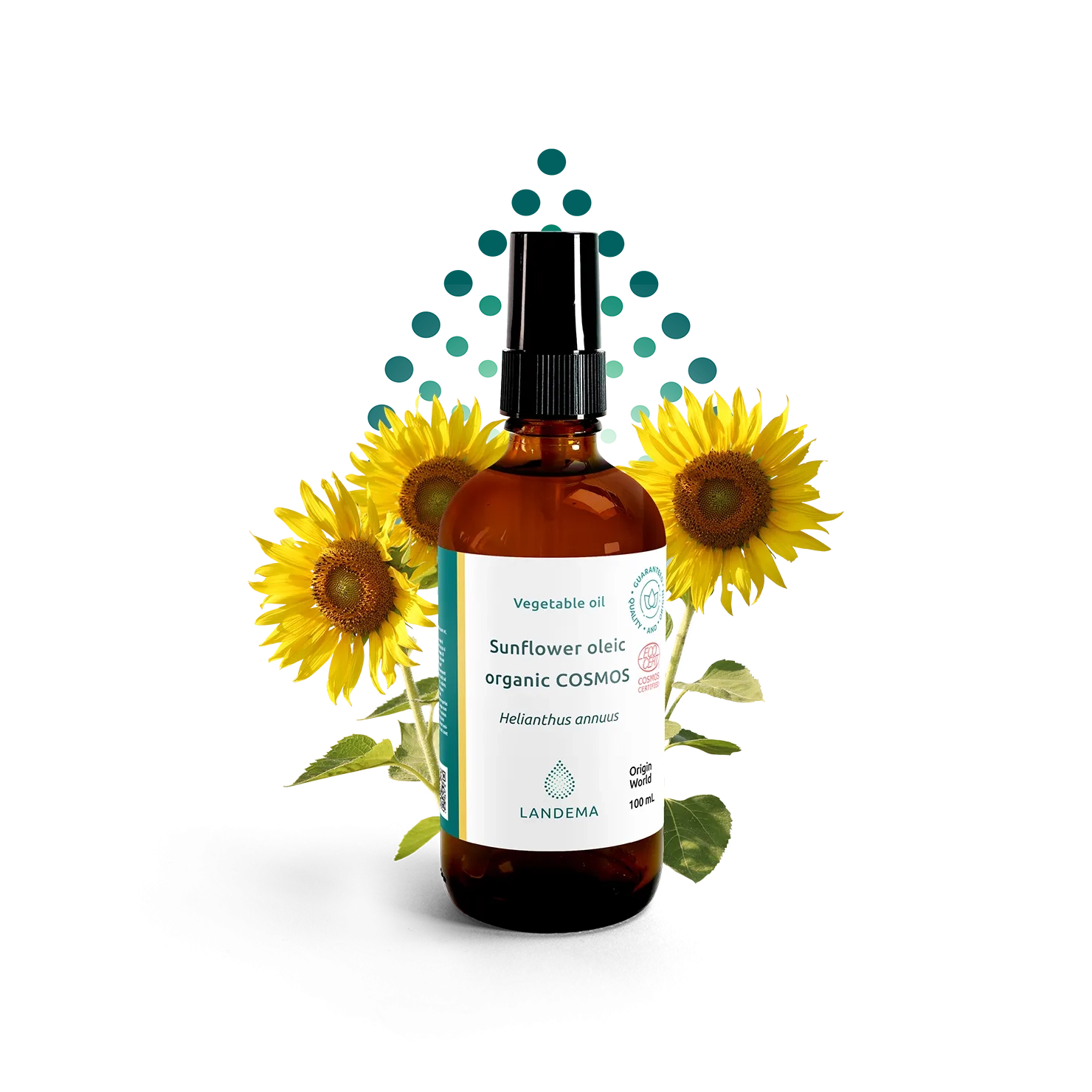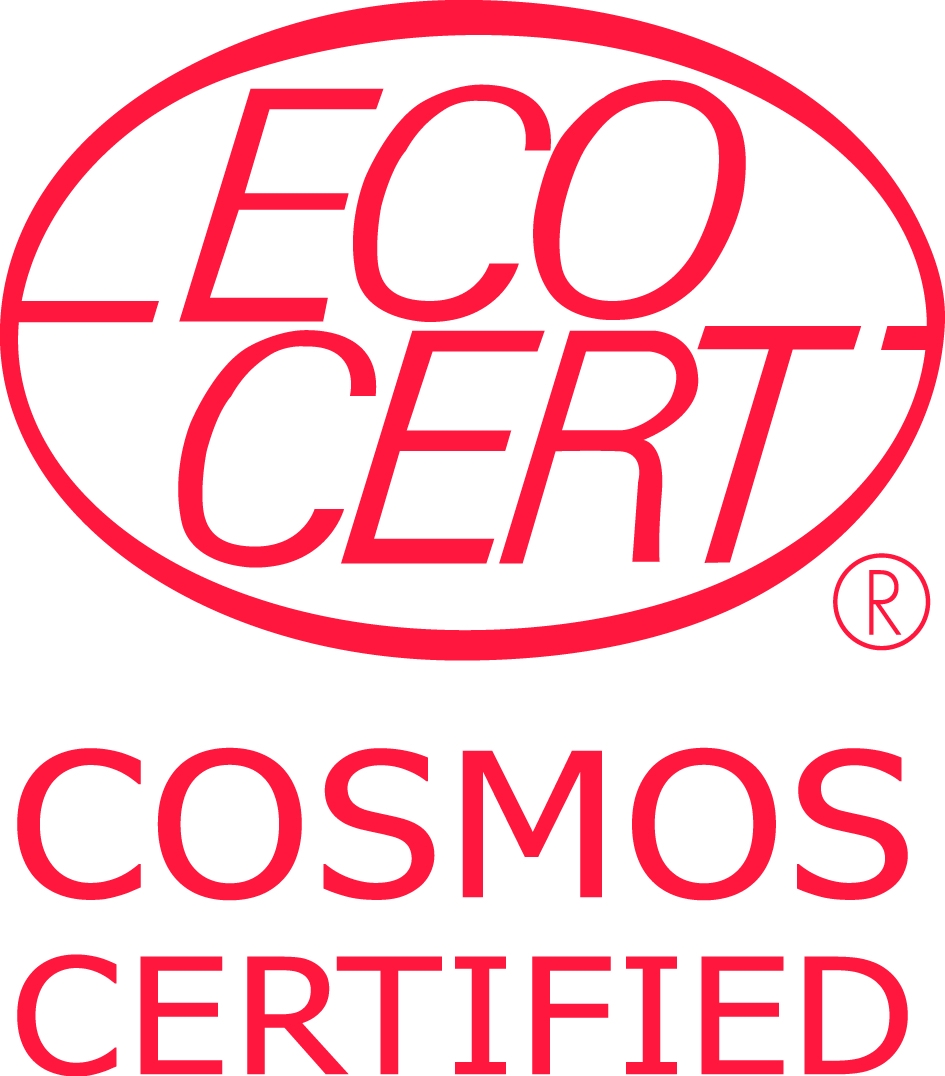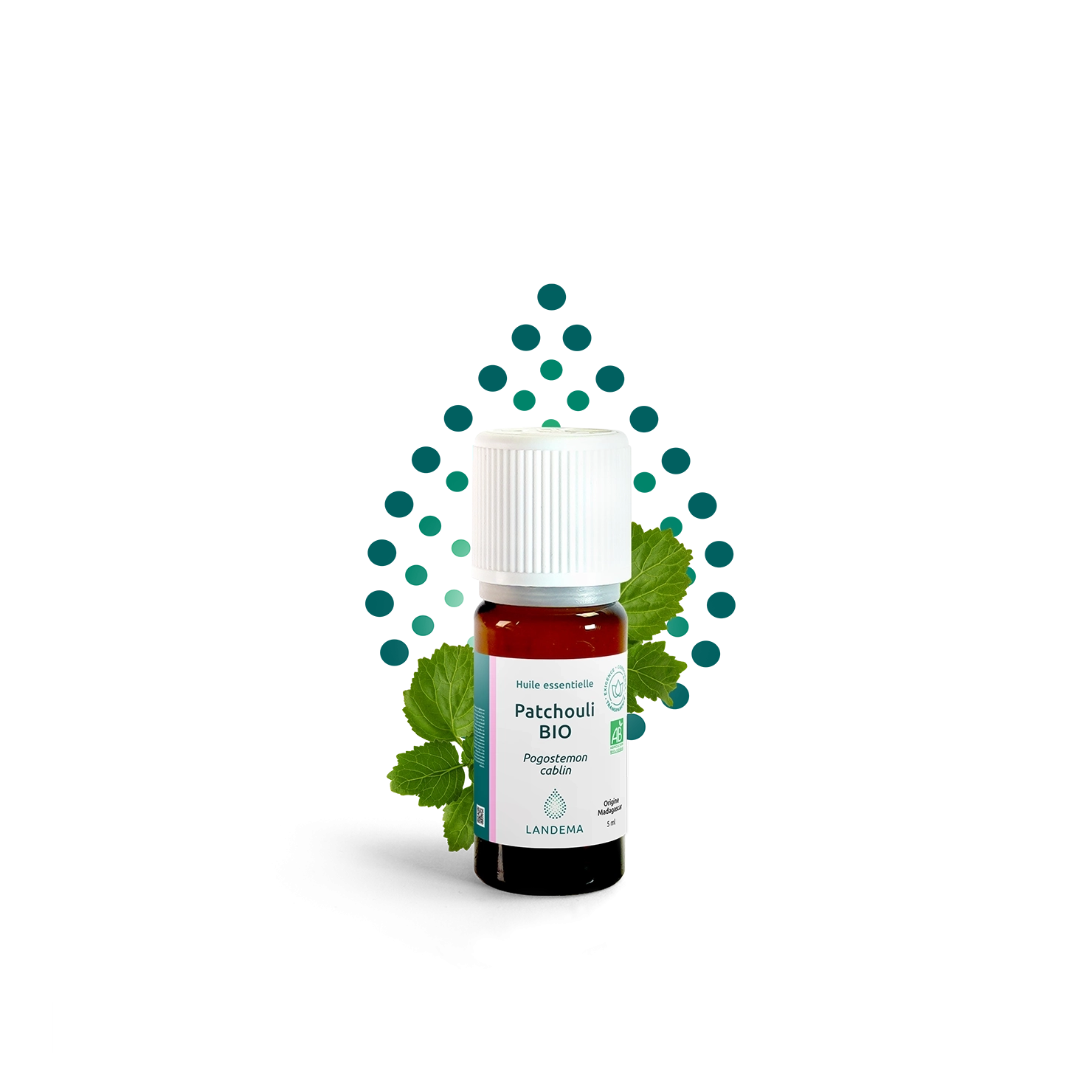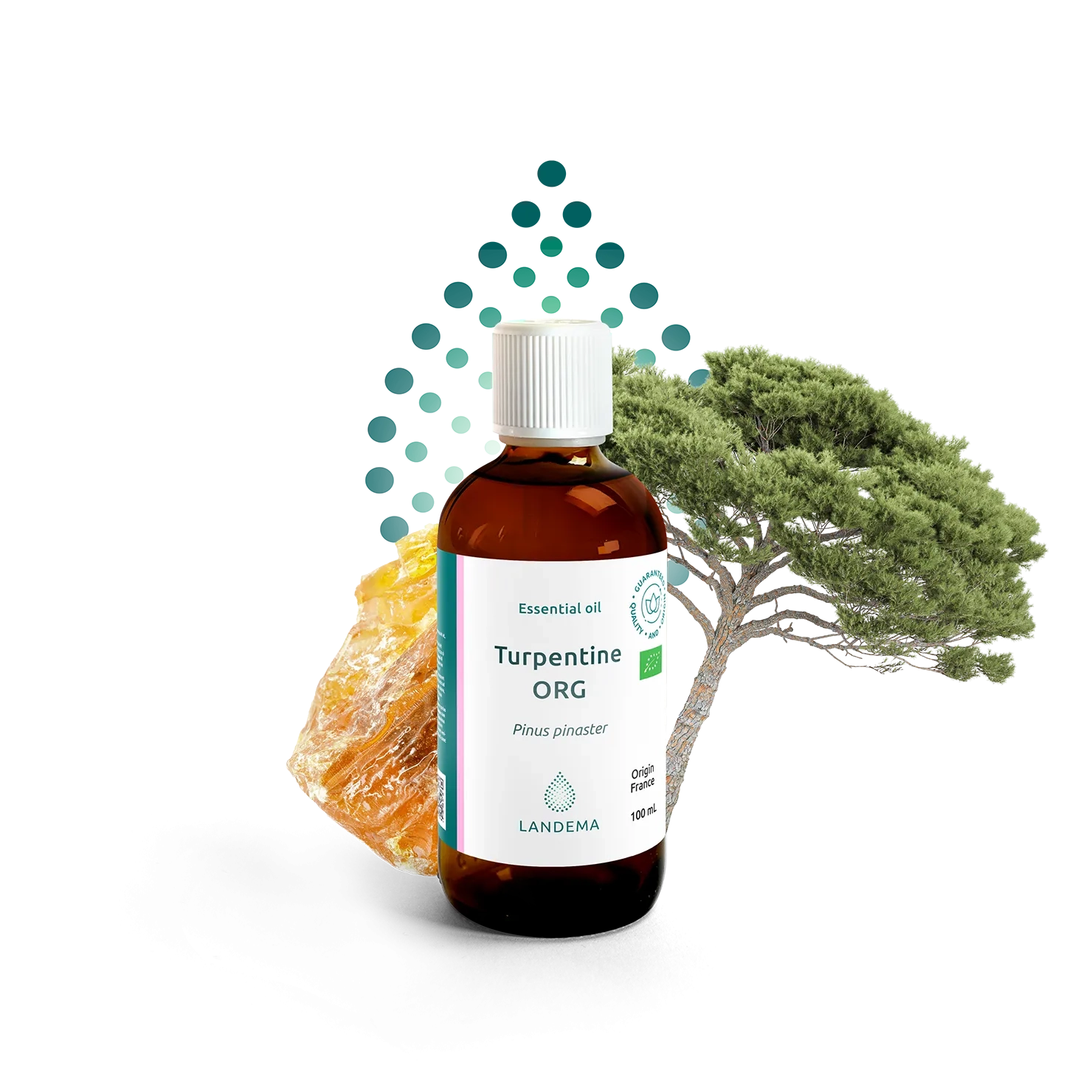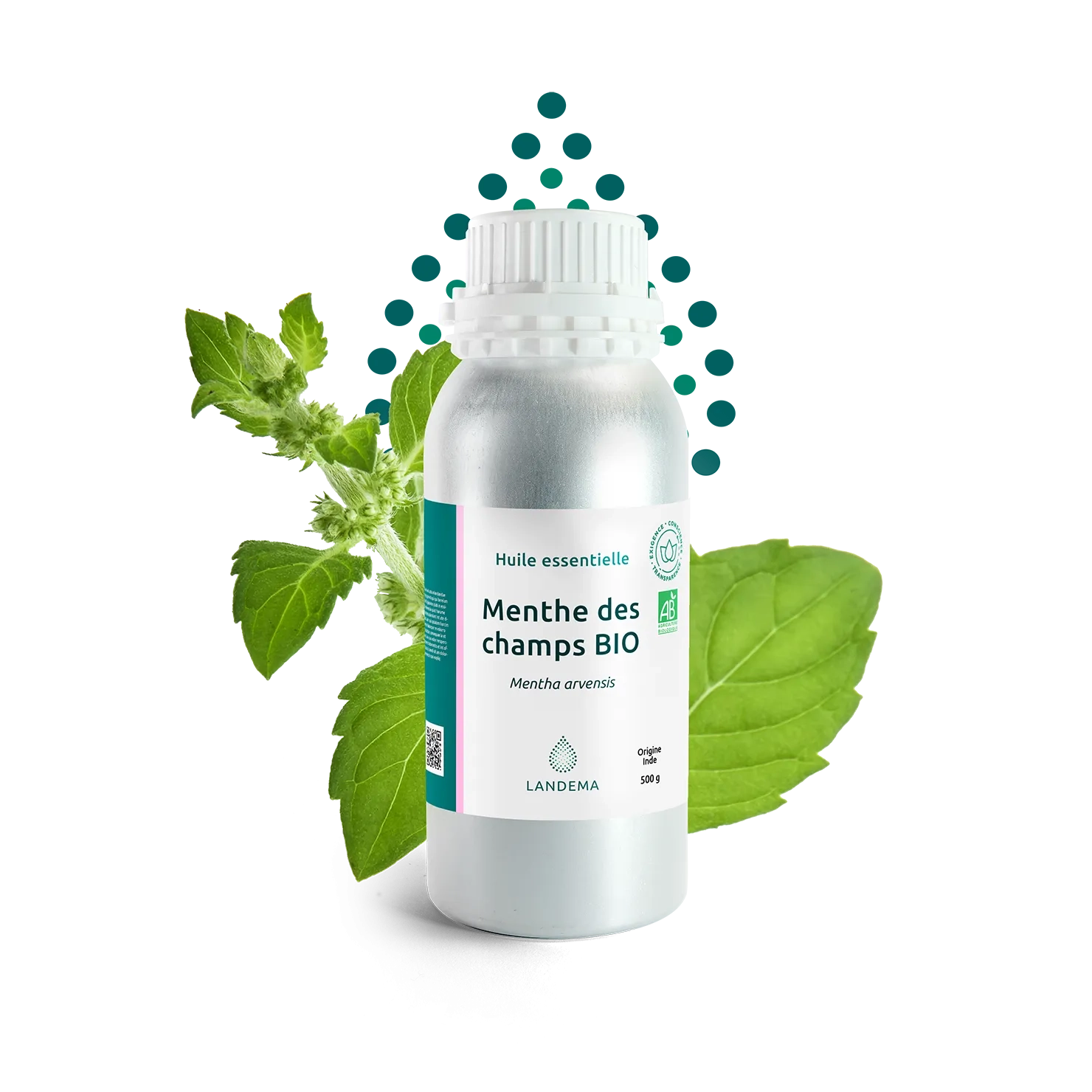Description
Origin and production:
Derived from the seeds of Helianthus annuus L., sunflower seed oil is obtained through pressing followed by refining. We prioritize high-oleic seeds (up to 90% oleic acid), primarily cultivated in Europe. This variety is known for its oxidative stability and naturally high vitamin E content.
Lipid profile and cosmetic benefits:
Rich in oleic acid (C18:1) and α-tocopherol, high-oleic sunflower oil is valued for its emollient, nourishing, and protective properties. It helps maintain skin elasticity, supports the skin barrier, limits moisture loss, and also offers antioxidant action. Its light and fluid texture makes it especially suitable for normal to dry skin.
Cosmetic applications:
High-oleic sunflower oil is used in the formulation of a wide range of personal care products, including:
-
facial and body moisturizing creams and lotions
-
skin or massage oils
-
nourishing hair care (oil baths, masks)
-
gentle cleansing balms or reparative balms.
- Certifications : Organic certified by ECOCERT Greenlife according to Cosmos Standard available at http://cosmos.ecocert.com
- Landema Label : Engaged sourcing
- Country of manufacturing : FRANCE
- Country of harvest : FRANCE
- Part of the plant : Seed
- Composition : 100% pure and natural. Cold pressed, refined.
- Olfactory notes : characteristic, discrete
- Quality and origin guaranteed: botanically and biochemically identified, a certificate of analysis provided with each purchased product.
- Controlled and packaged in our workshops
Production
Harvest
Helianthus annuus L., commonly known as sunflower, is an annual plant belonging to the Asteraceae family. It is an upright, unbranched plant that grows between 0.6 and 3 meters in height. The stem is semi-woody, sturdy, and covered with a rough epidermis. The leaves are alternate, broad, three-veined, acuminate, toothed, and covered with rough hairs on both the upper and lower surfaces, with long petioles. Their color ranges from dark green to yellowish green, depending on the growing conditions and variety. A single plant typically bears between 12 and 40 leaves.
The flowers are grouped into solitary, heliotropic flower heads (capitula). These showy flower heads measure between 10 and 30 cm in diameter and have a flat or semi-flat floral receptacle. Each capitulum contains two types of florets: inner and outer. The inner florets are tubular, brown, and hermaphroditic, producing the seeds. The outer florets are ligulate, yellow, and sterile, attracting pollinating insects. Flowering occurs from July to September.
The sunflower seed is an achene measuring 3 to 20 mm long and 2 to 13 mm wide. The pericarp is fibrous, hard, and closely adherent to the seed. Today, only a few countries cultivate sunflower in significant quantities: the entire European Union, Central and Eastern Europe, the United States, and Argentina. Smaller quantities are grown in China, Turkey, India, and South Africa.
The name Helianthus comes from the Greek words helios (sun) and anthos (flower). The term annuus is Latin and means “annual.”
The origins of the sunflower date back to 3000 BCE, in northern Mexico and the western United States. Native American tribes in New Mexico and Arizona were already cultivating the plant. Before the discovery of the Americas, sunflower was among the staple agricultural crops consumed by various Native American communities.
Spanish colonists brought sunflower seeds back to Spain, from where they spread throughout Europe. For about two centuries, sunflower was grown primarily as an ornamental plant in Spain and the rest of Europe due to its striking inflorescences. The use of sunflower oil in the food industry began in the 19th century.
Today, a wide range of products derived from sunflower seeds—such as crude and refined oils and sunflower meal—are used in the food industry and are increasingly found in new cosmetic applications.
Manufacturing
Sunflower oil is produced by pressing and refining the seeds of Helianthus annuus L.
Sunflower seeds contain a high oil content, ranging from 27% to 37%, and in some cases up to 45%.
Unsaturated fatty acids:
Sunflower seeds are rich in unsaturated fatty acids. The table below shows the main fatty acids in oleic sunflower seeds and their average proportions:
| Fatty acid | Content (%) |
|---|---|
| Palmitic acid (C16:0) | 2.6 – 5.0 |
| Stearic acid (C18:0) | 2.9 – 6.2 |
| Oleic acid (C18:1) | 70 – 90.7 |
| Linoleic acid (C18:2) | 2.1 – 20.0 |
| Linolenic acid (C18:3) | Max. 0.5 |
| Arachidic acid (C20:0) | Max. 0.5 |
| Behenic acid (C22:0) | Max. 2.0 |
Sunflower oil also contains a high proportion of sterols and tocopherol (vitamin E).
| Sterol | Content (%) |
|---|---|
| β-sitosterol | 60 |
| δ-7-stigmastenol | 7 – 14 |
| δ-5-avenasterol | 4 – 6 |
Sunflower oil is also rich in α-tocopherol. On average, 100 g of sunflower oil contain about 55 mg of α-tocopherol.
Harvesting calendar :
- jan
- fev
- mar
- avr
- mai
- jui
- jul
- aou
- sep
- oct
- nov
- dec
Application
Main areas of application :
Cosmetic
 Cosmetics
Cosmetics
Skin Barrier Repair Activity:
Sunflower oil is rich in essential fatty acids, which play a key role in skin elasticity and hydration.
Antioxidant Activity:
Tocopherols (vitamin E) are excellent antioxidants that protect membrane lipids and cellular organelles from oxidation.
Hair Conditioning Activity:
Evidence shows that vitamin E protects hair and the scalp from dryness, breakage, and damage caused by chemical treatments.
Antimicrobial Activity:
Ozonized sunflower oil has shown significant antimicrobial, anti-inflammatory, and healing activity.
The recommended dosage is between 0.5% and 5%.
Technical and regulatory
Detailed information :
| Commercial designation : | Sunflower oleic refined Organic veget. oil COSMOS |
| Product's Familly : | SUNFLOWER |
| Type of extract : | Vegetable oil |
| INCI Cosing : | Helianthus annuus hybrid oil |
| Country of manufacturing : | FRANCE |
| Country of harvest : | FRANCE |
| Part of the plant : | Seed |
| Declared domestic use : | Ingredient |
| Botanical name : | Helianthus annuus L. |
| Composition : | 100% pure and natural. Cold pressed, refined. |
| Regulated sale : | Non |
| CAS EINECS : | 8001-21-6 |
| CAS TSCA : | 8001-21-6 |
| CE number : | 232-273-9 |
| Registered in food inventories : | No |
| Flash point (°C) : | 290 |
| Minimum shelf life (month) : | 18 |
| Internal reference : | BCE1502 |
| Transport Data Dangerous Goods : | Not classified as dangerous |
Technical and regulatory documents :
Usage tips
Manual:
Ingredient for cosmetic preparation, do not ingest.
Consult our guides: storage and preservation methods and precautions for use
Latest products
Choose a concentrate
of exceptional plants
Your wishlist
